USDA Hardiness Zone 6 has frigid winters and hot summers. Knowing which plants thrive in this zone is important due to the extreme temperatures that Zone 6 can experience. We will go over a list of flowers to plant in the fall for Zone 6 and how to beautify your landscape!
Where is Zone 6 you ask? Great question! Parts of New York, Pennsylvania, New Jersey, West Virginia, North Carolina, Maryland, Georgia, Ohio, Kentucky, Kansas, Arizona, Colorado, New Mexico, Utah, Idaho, Montana, Washington, and Oregon. Parts of Maine, Alaska, Massachusetts, and New Hampshire are also included.
Generally, it is recommended to plant flowers in either the fall or spring. A good rule of thumb for fall flowers is to give them plenty of time to establish before the first frost. Check your local forecast to estimate the first freeze for your specific area.
![a spring garden in dappled light with blooming azalea and porch in background, Zone 6 Flowers To Plant In Fall [14 Suggestions To Beautify Your Landscaping]](https://gardentabs.com/wp-content/uploads/2022/08/73.-Zone-6-Flowers-To-Plant-In-Fall-14-Suggestions-To-Beautify-Your-Landscaping.jpg)
Here is our list of 14 suggestions in Zone 6 for attractive, fall flowers:
1. Garden Mum
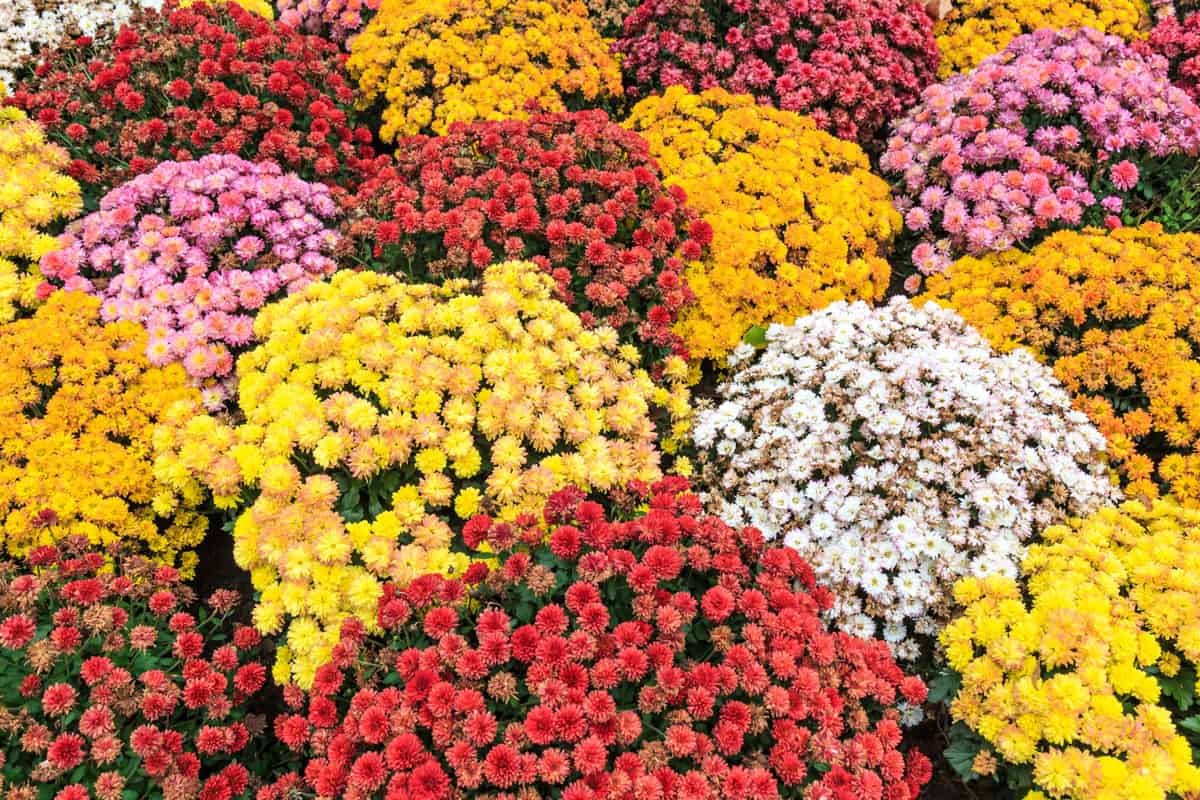
Mums are one of the most popular fall flowers. They come in an array of colors like blue, pink, red, orange, and purple. They love sunny spots and thrive in well-draining soil.
There has been some confusion on whether or not mums are perennials or annuals. The garden mum variety is a perennial that will come back year after year as long as you plant them early enough in the fall to take root.
Shoot for early September to get your mums in the ground for the best chance to survive the cold winters.
2. New England Aster "Purple Dome"
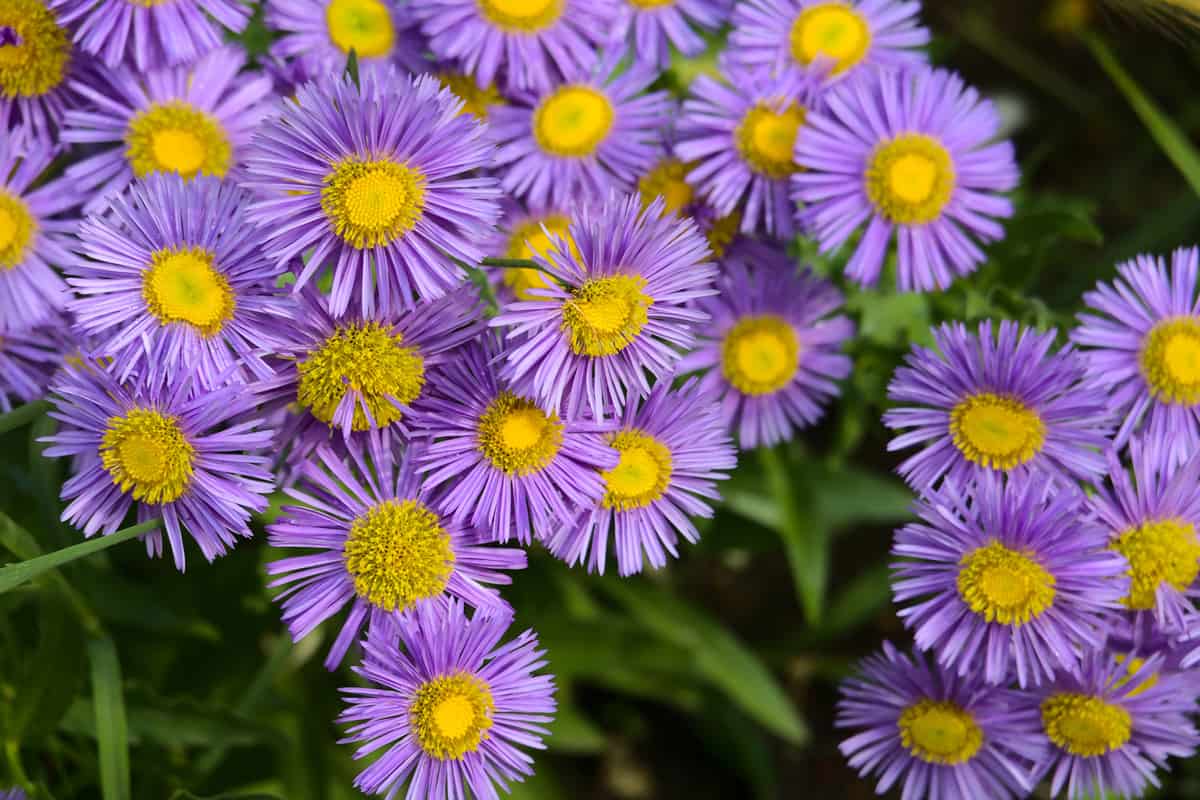
New England aster, also known as purple dome, has deep, lavender flowers that bloom in the fall. This perennial is admired because it attracts butterflies, bees, and hummingbirds. Normally, asters are used along pathways and to fill small spaces due to their mounding habit.
They love ample sunlight and full sun to flourish. New England aster is easy to grow and requires very little maintenance. In fact, they do well in any type of soil, even clay soil. Nevertheless, don't let these plants completely dry out, as they prefer moderately moist soil.
3. Helenium "Red Jewel"
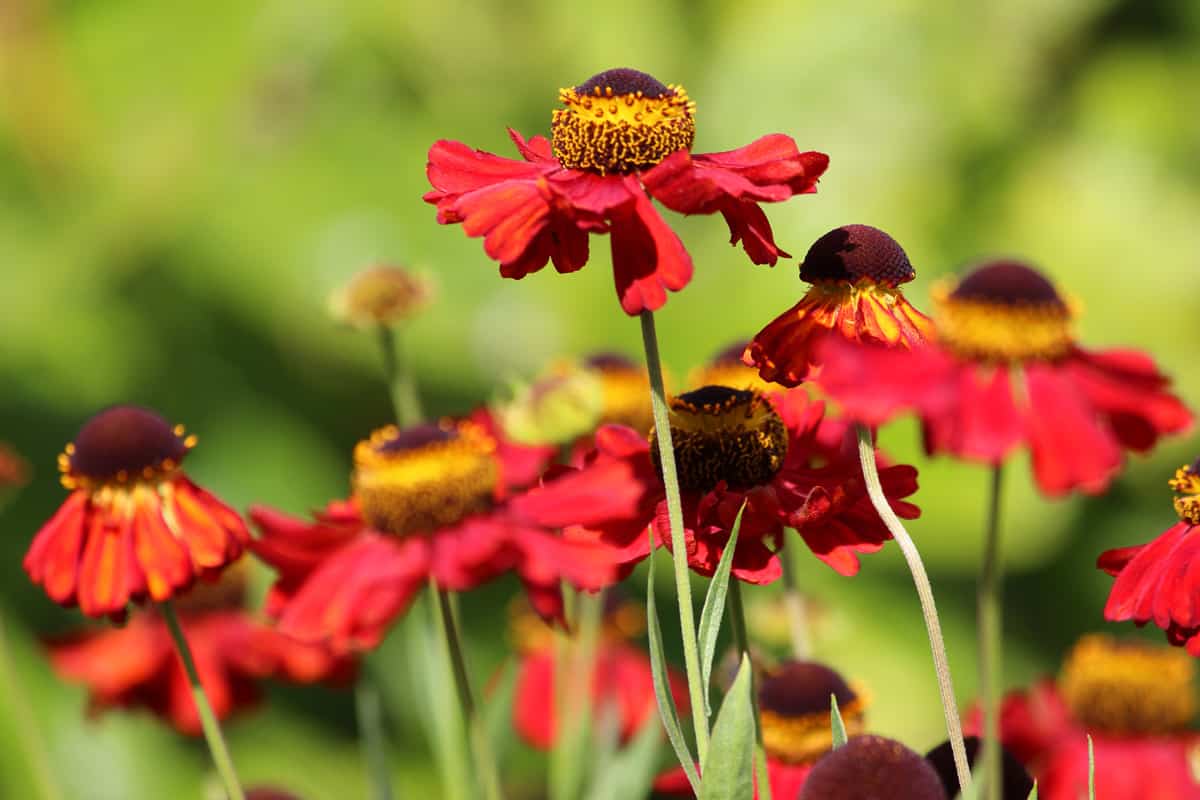
Red jewel helenium with its bright orange and red colors blooms well into late fall. Helenium's autumn hues remind of us pumpkin patches and cool weather.
Plant them in rich soil to see them sprout again in the spring. Helenium's hardy stems and flowers make a stunning bouquet.
4. Japanese Toad Lily
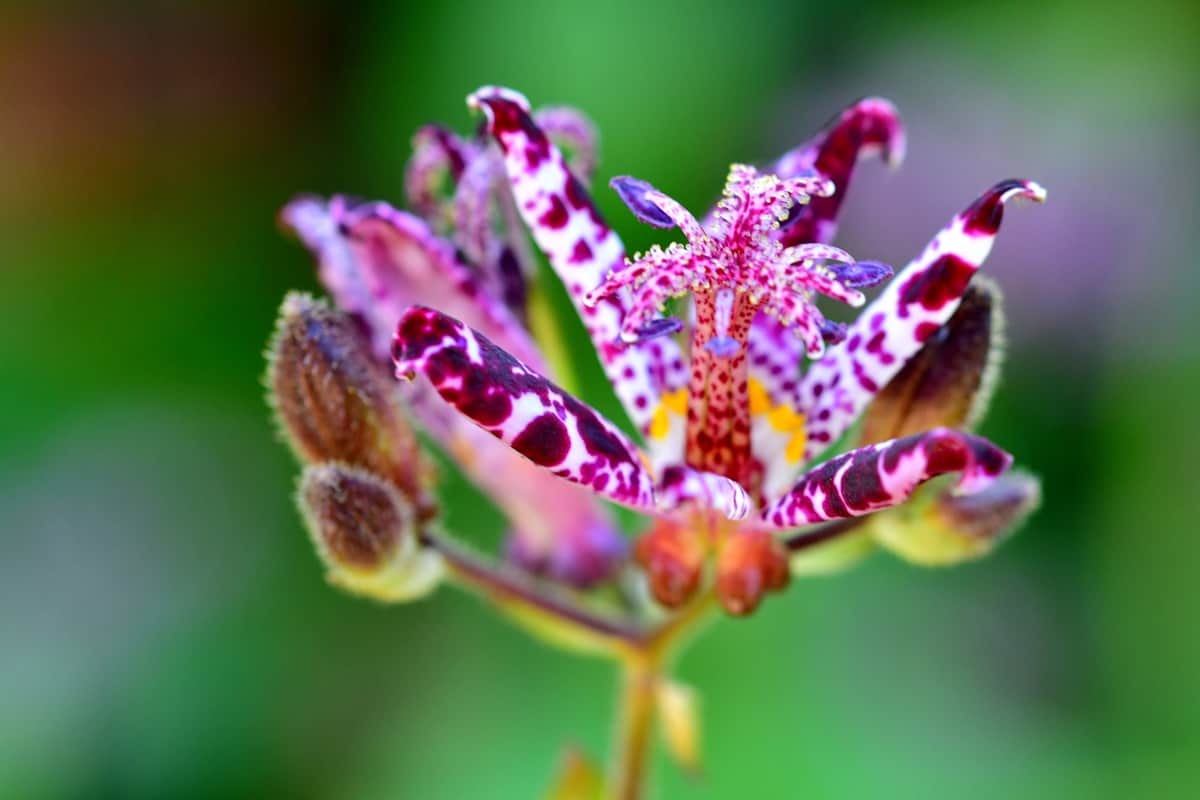
5. Russian Sage "Rocketman"
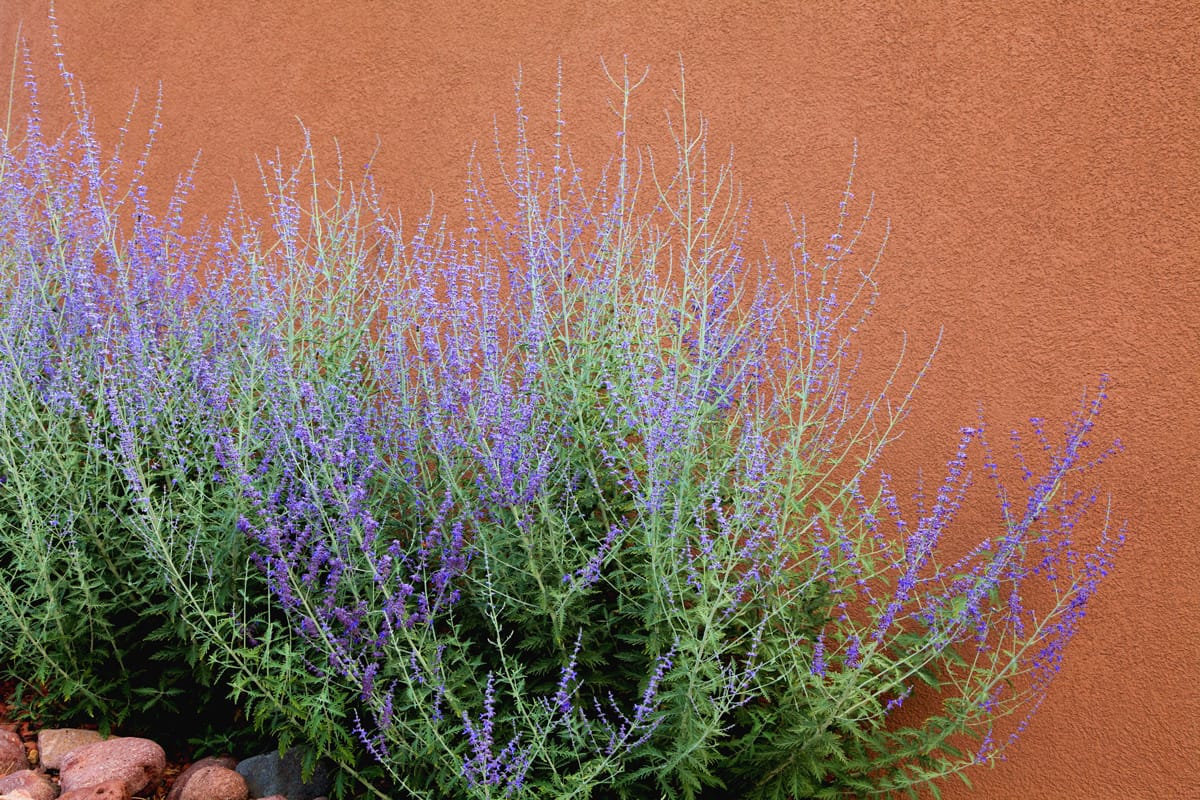
This perennial shrub loves the full sun and is drought tolerant. They can withstand drought, heat, poor soil, and more! They have few issues with pests or diseases. As you can see, this tough plant is admired and approved by even beginner gardeners.
They resemble lavender with their deep purple flowers and aromatic smell. Also, they attract wonderful pollinators like bees and butterflies.
Click here to see this Russian sage rocketman on Amazon.
6. Tall Fall Sedum
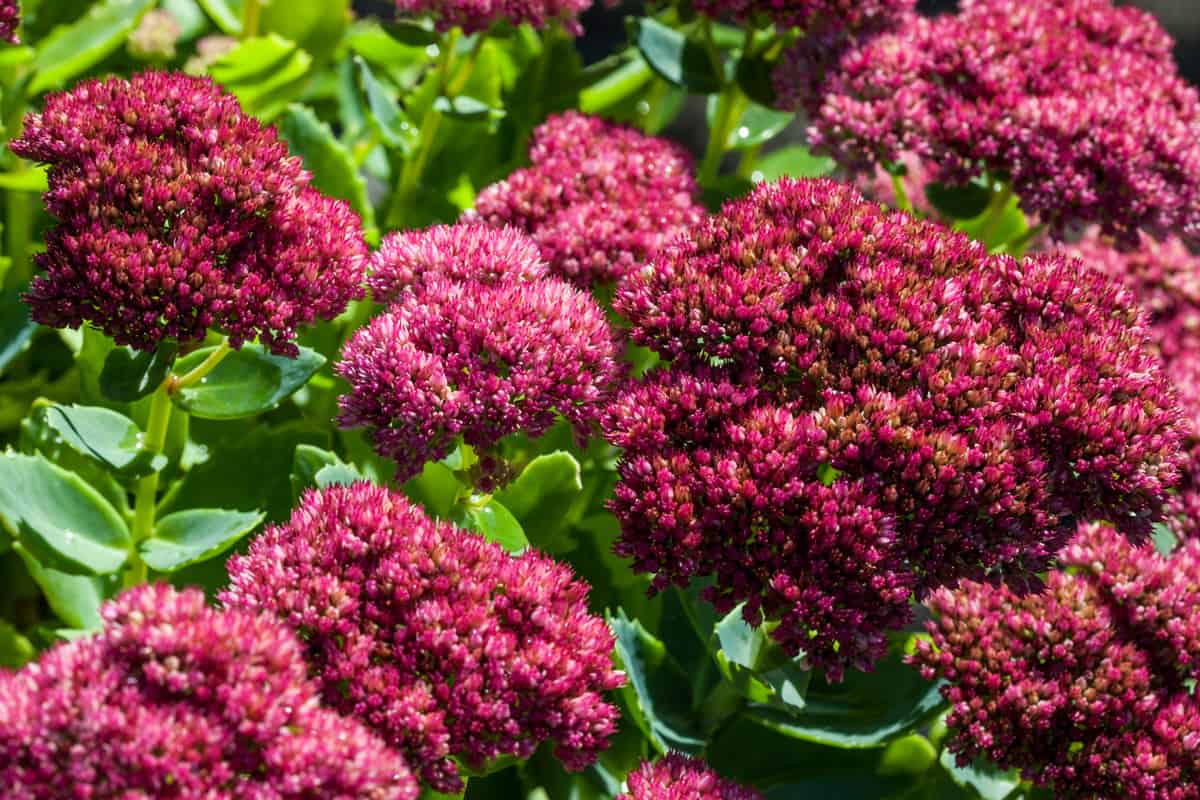
7. Japanese Anemone "Whirlwind"
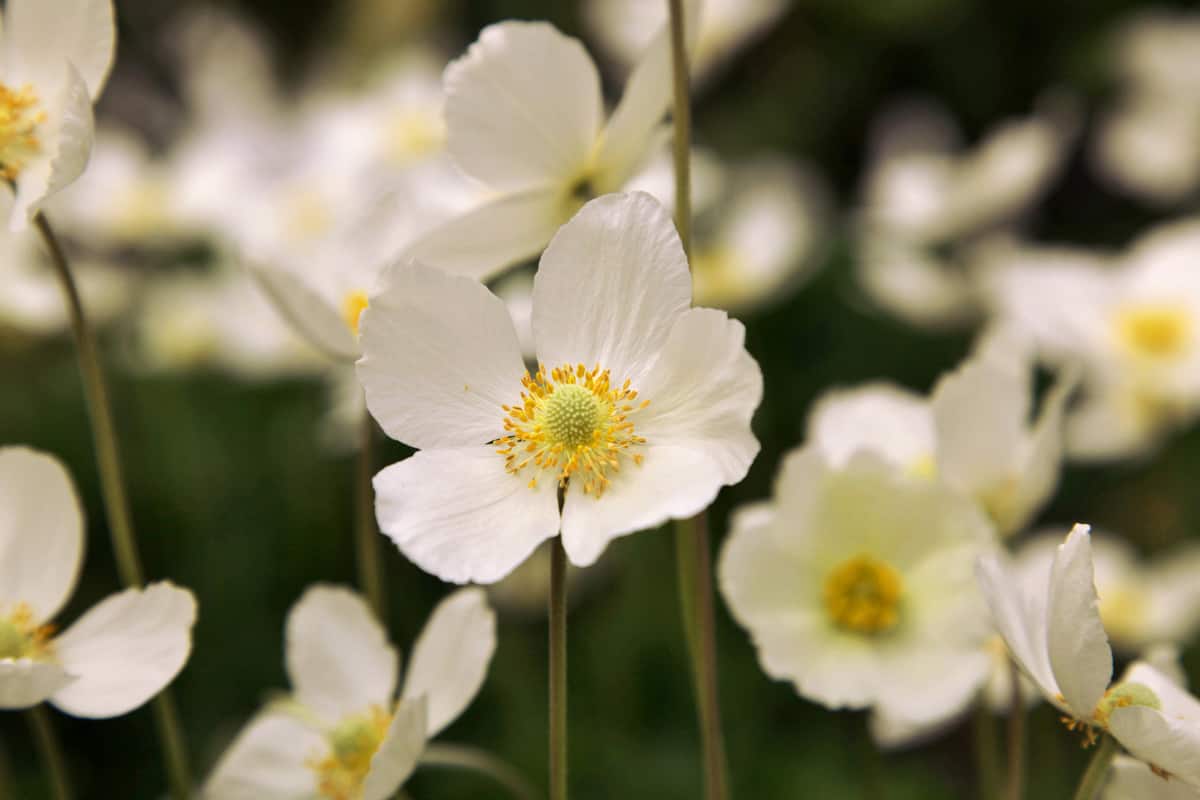
These tall stemmed charmers are known for their white flowers and bright yellow center. With their maintenance low and their water needs average, the soil needs to be just right. They prefer moist but well-drained soil.
They will bloom from late summer to late fall. Although they appear delicate, they are hardy once established and will need some light mulching in the winter. Whirlwinds are popular among borders and cottage gardens.
8. Azure Monkshood
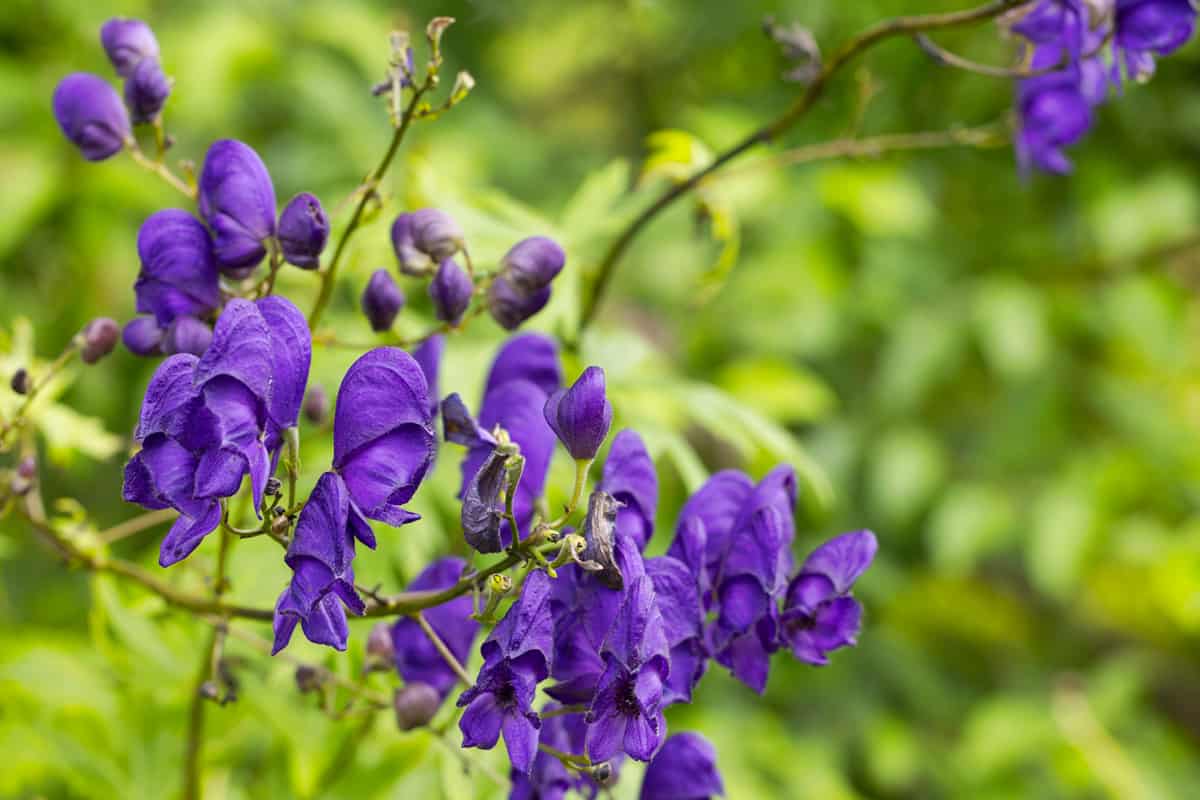
Azure monkshood has a blue-purple hue, and its flowers resemble little hoods or helmets. They are a great addition to bring in late fall color and interest to your garden. At times, they require staking due to their long and stalky stems.
Part shade and rich soil are preferred for monkshood to do well. However, they can thrive in full sun as long as the soil is consistently moist. A bonus is that we have another pollinator in our lineup!
9. Goldenrod "Fireworks"
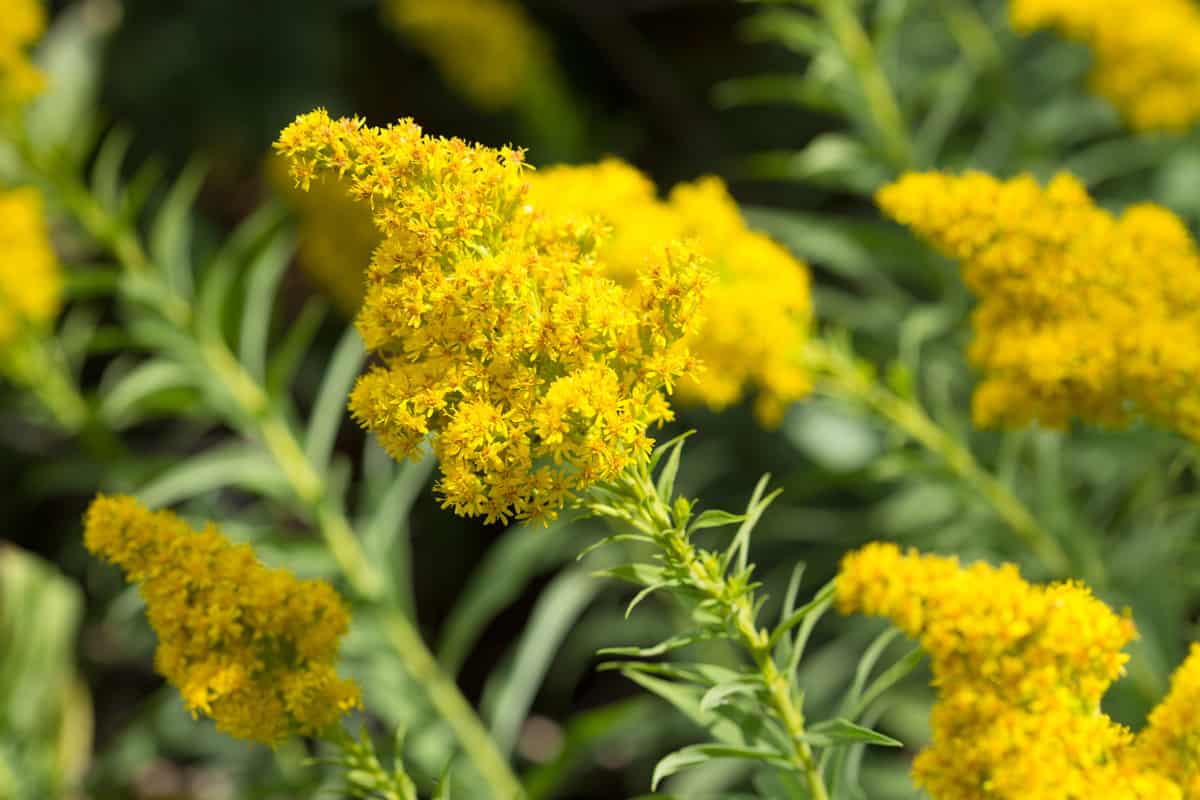
10. Switch Grass "Prairie Fire"
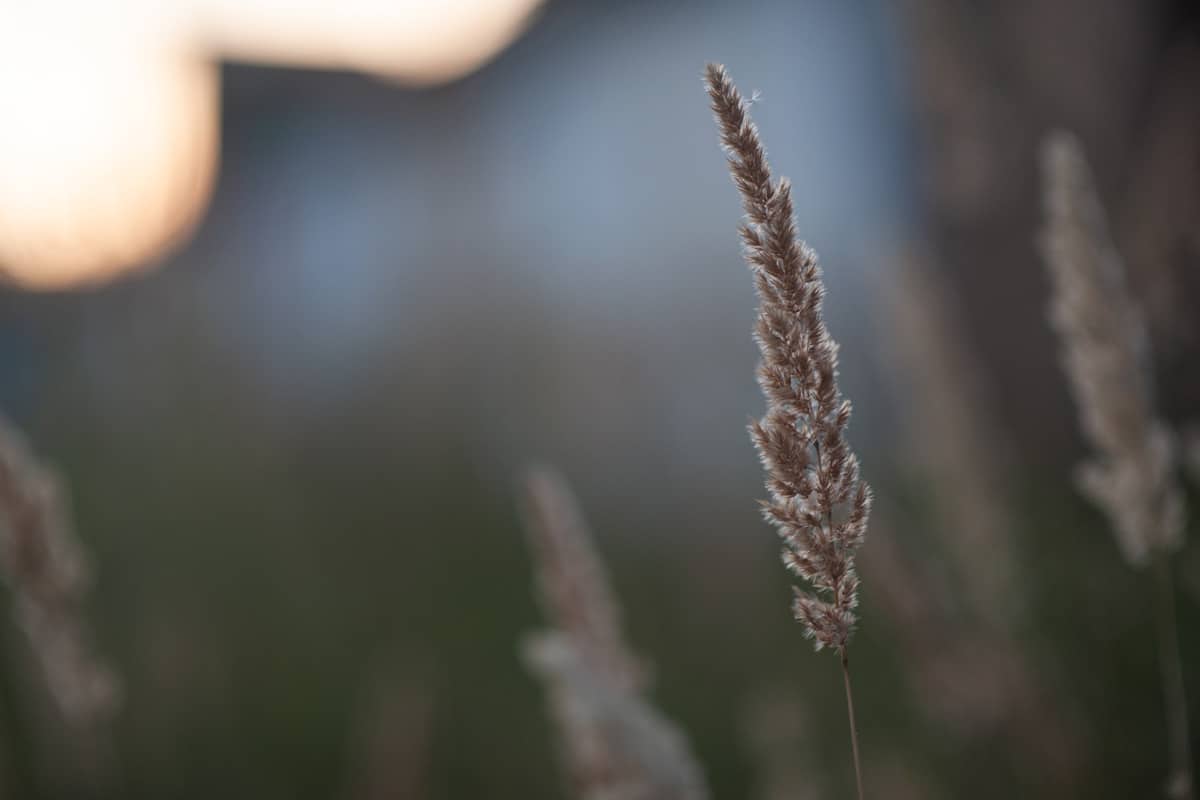
Prairie fire is a perennial, ornamental grass that has green stems and red leaves. It easily stands up to winter weather and looks great during all growing seasons.
Switch grass grows in dense clusters and is great in cottage gardens or next to wildflowers. Normally, you'll find wildlife like birds making a home in these grasses during the winter season.
11. Begonia
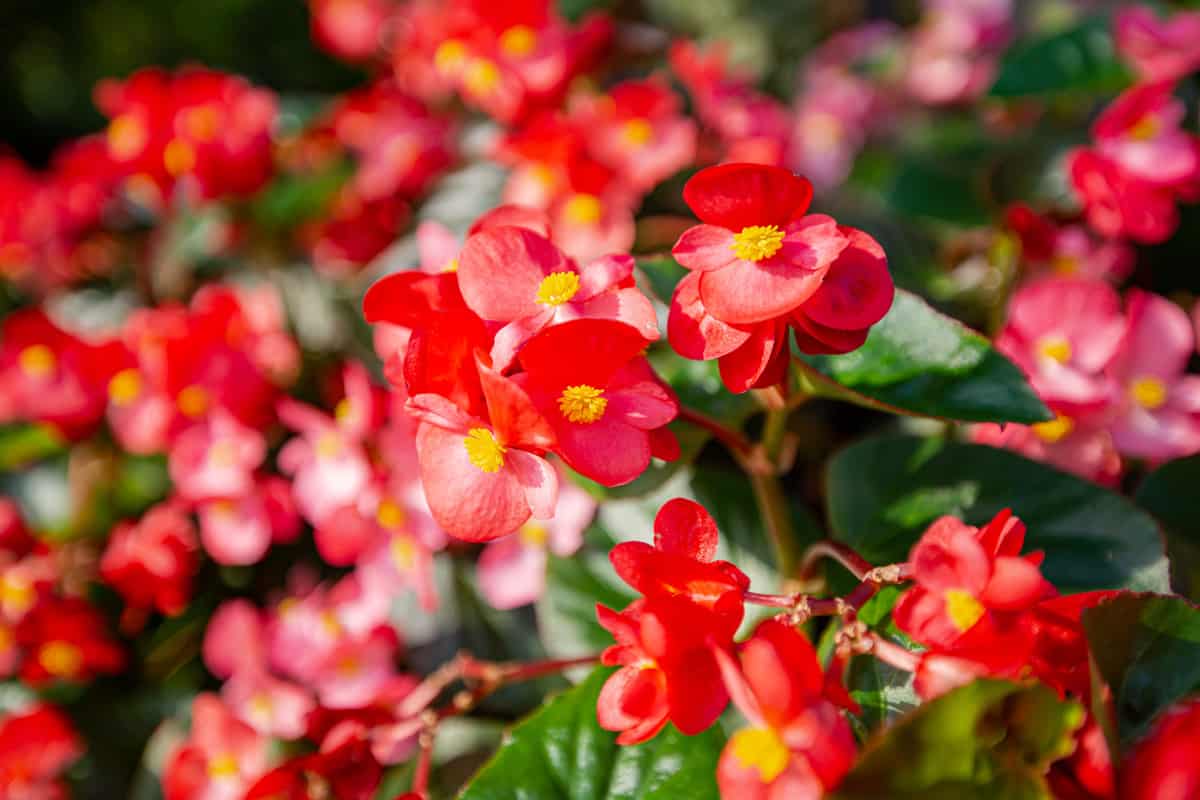
Begonias are annuals that produce charming and full blossoms. They grow in clusters and nicely fill in any bare spots. Watering and the right location for Begonias are important.
They fancy full sun but plant them in a more shaded area if you have high temperatures throughout the summer. Exceptionally hot areas can wilt these beauties. Soil should remain moist but not overly wet. Bonus tip—if you cut them back before the first frost, you can bring them inside for a happy houseplant.
Click here to see these begonias on Amazon.
12. Marigold
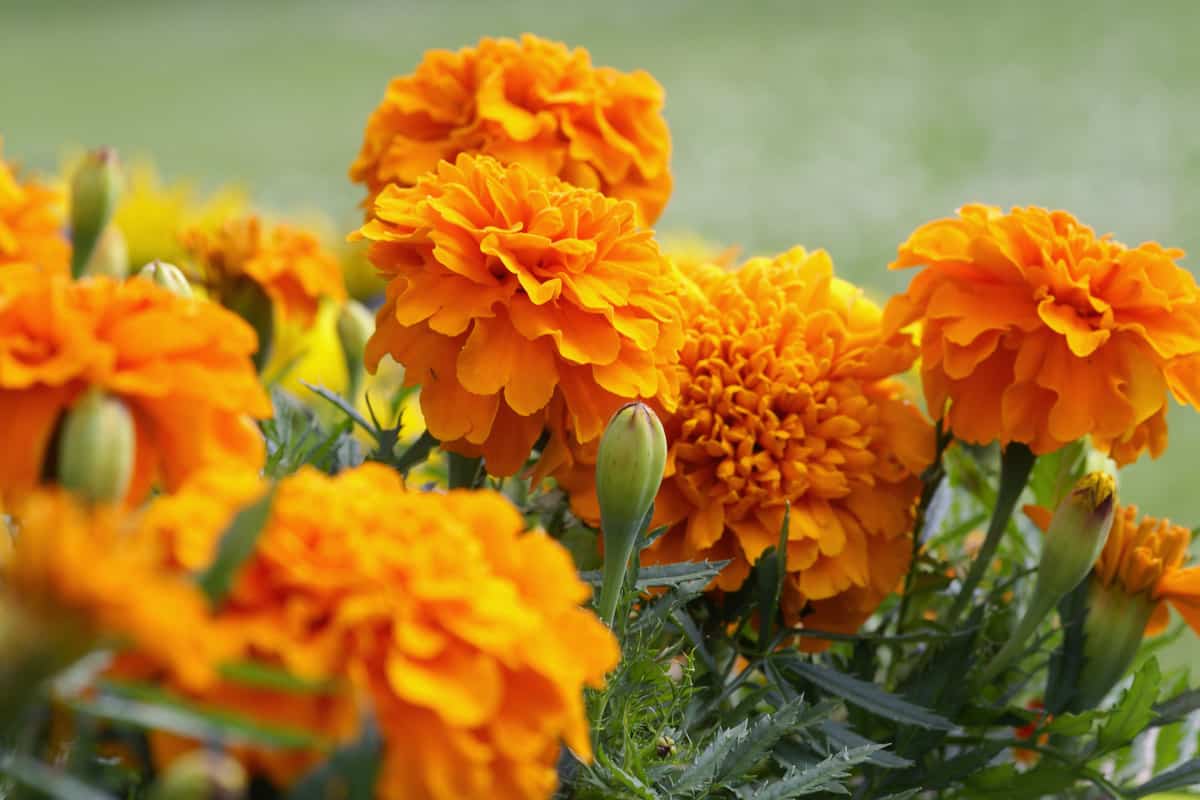
Oh, marigolds, how we love thee! These yellow, orange, and red flowers are extremely easy to grow and offer bright blooms through the late fall.
They enjoy full sun and grow well in either moist or dry soil. You only need to water them if the soil has been dry for weeks. Deadheading is the secret to cheery flowers and more marigolds. They continue to grow and spread the more you deadhead.
Click here to see these marigolds on Amazon.
13. Sunflower
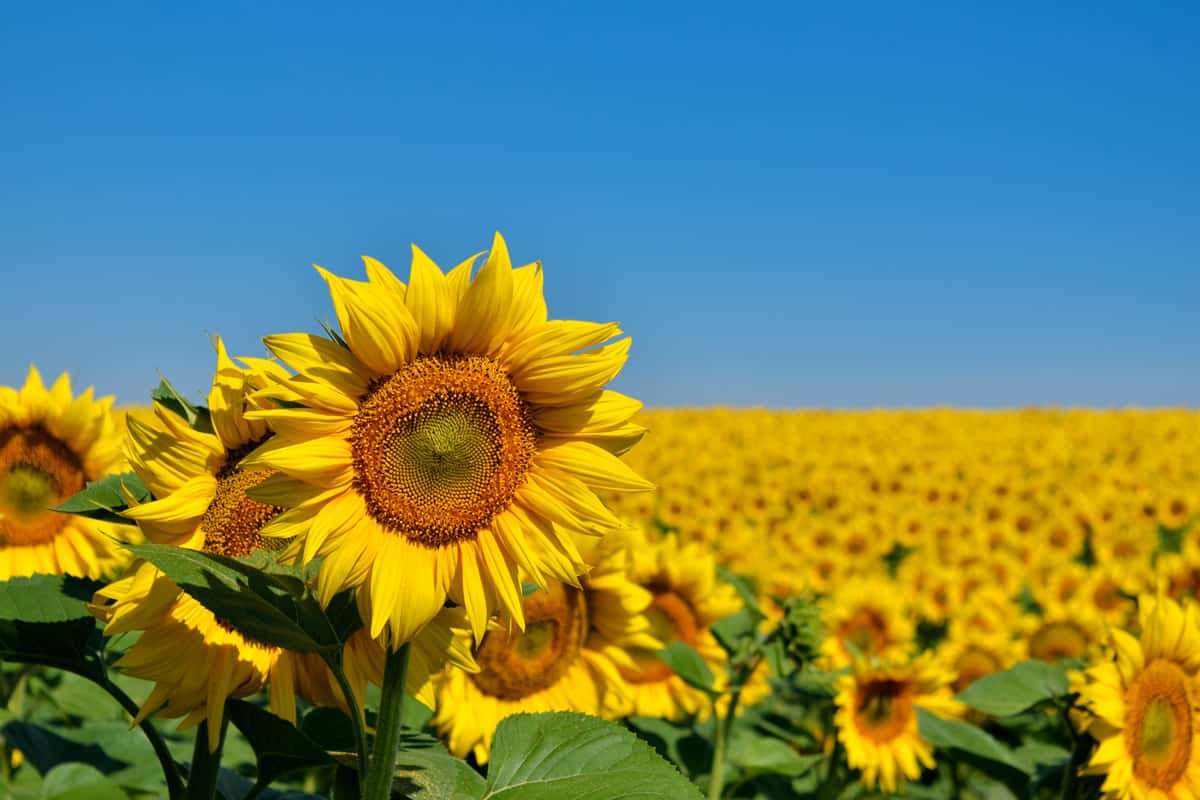
Sunflowers are great for beginner gardeners because they are immensely easy to grow from seedlings. Hues of yellow, red, and orange sunflowers can grow anywhere between a foot and a half to 12 feet tall. If you love birds, harvest your sunflower seeds to feed your feathered friends throughout the season.
Sunflowers require full sun, so be picky about the spot you choose to plant them. Having said that, you don't have to be as picky about the quality of the soil. They can thrive in mediocre soil just fine.
Click here to see these sunflowers on Amazon.
14. Pansy

Another annual, pansies have been known to produce cheerful blooms throughout the fall and even winter. They have heart-shaped petals that look like faces. Pansies come in a lineup of vibrant colors.
Keep in mind that they prefer acidic, well-draining soil. Therefore, it's beneficial to work some compost into the soil. This will provide the plant with organic materials and allows for proper drainage. Pansies are nearly effortless once you get these items perfectly.
Wrapping It Up
Whether annuals or perennials, we've listed 14 of the best and most delightful flowers for your Zone 6 fall garden. We can't wait for fall to dig in and start planting!
Made it to the end? Check out these related articles:
Do Deer Eat Marigolds? [And How To Prevent That]





